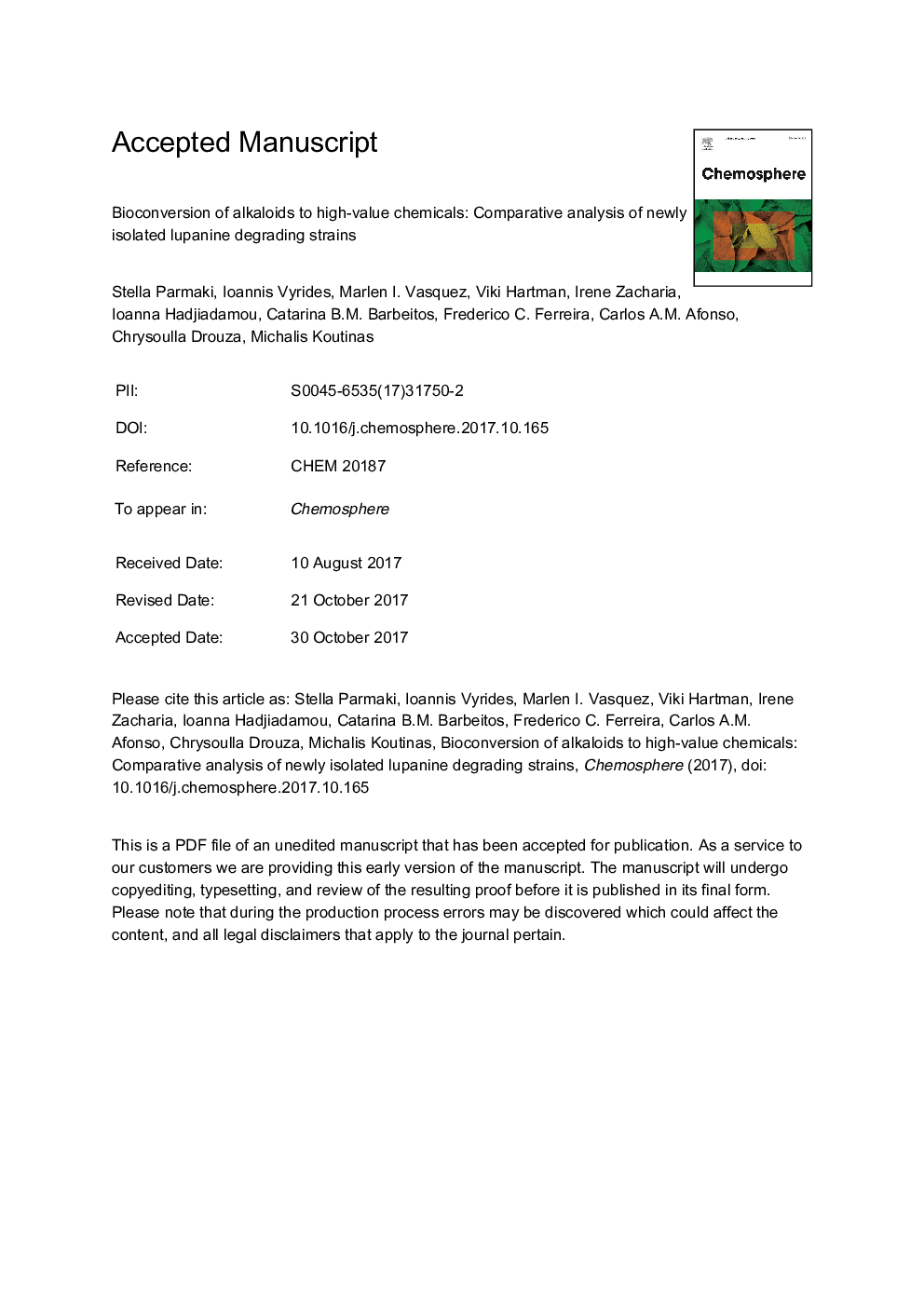| Article ID | Journal | Published Year | Pages | File Type |
|---|---|---|---|---|
| 8852710 | Chemosphere | 2018 | 37 Pages |
Abstract
This work explores the potential for development of a lupanine valorization process evaluating different isolated microorganisms for their capacity to metabolize the alkaloid. Ecotoxicological assessment demonstrated that lupanine is toxic for Vibrio fischeri and Daphnia magna exhibiting EC50 values of 89 mg Lâ1 and 47 mg Lâ1 respectively, while acting both as growth inhibitor for a monocotyledonous and as promoter for a dicotyledonous plant. Among the eight aerobic and anaerobic strains isolated and identified Rhodococcus rhodochrous LPK211 achieved 81% removal for 1.5 g Lâ1 lupanine, while no end-products were detected by NMR constituting a promising microorganism for lupanine biodegradation. Moreover, Rhodococcus ruber LPK111 and Rhodococcus sp. LPK311 exhibited 66% and 71% of removal respectively, including potential formation of lupanine N-oxide. Pseudomonas putida LPK411 reached 80% of lupanine removal and generated three fermentation products potentially comprising 17-oxolupanine and lupanine derivatives with open ring structures enabling the development of alkaloid valorization processes.
Keywords
ITSLupaninei.v.p.o.i.p.EC50IC50ACNNCBILD50Quinolizidine alkaloidsOral administrationToxicity assessmentBioconversionBiodegradationintraperitoneal administrationIntravenous administrationNMRlethal doseaccession numberNuclear magnetic resonance spectroscopyNational Center for Biotechnology Informationhalf maximal inhibitory concentrationhalf maximal effective concentrationGas chromatography
Related Topics
Life Sciences
Environmental Science
Environmental Chemistry
Authors
Stella Parmaki, Ioannis Vyrides, Marlen I. Vasquez, Viki Hartman, Irene Zacharia, Ioanna Hadjiadamou, Catarina B.M. Barbeitos, Frederico C. Ferreira, Carlos A.M. Afonso, Chrysoulla Drouza, Michalis Koutinas,
